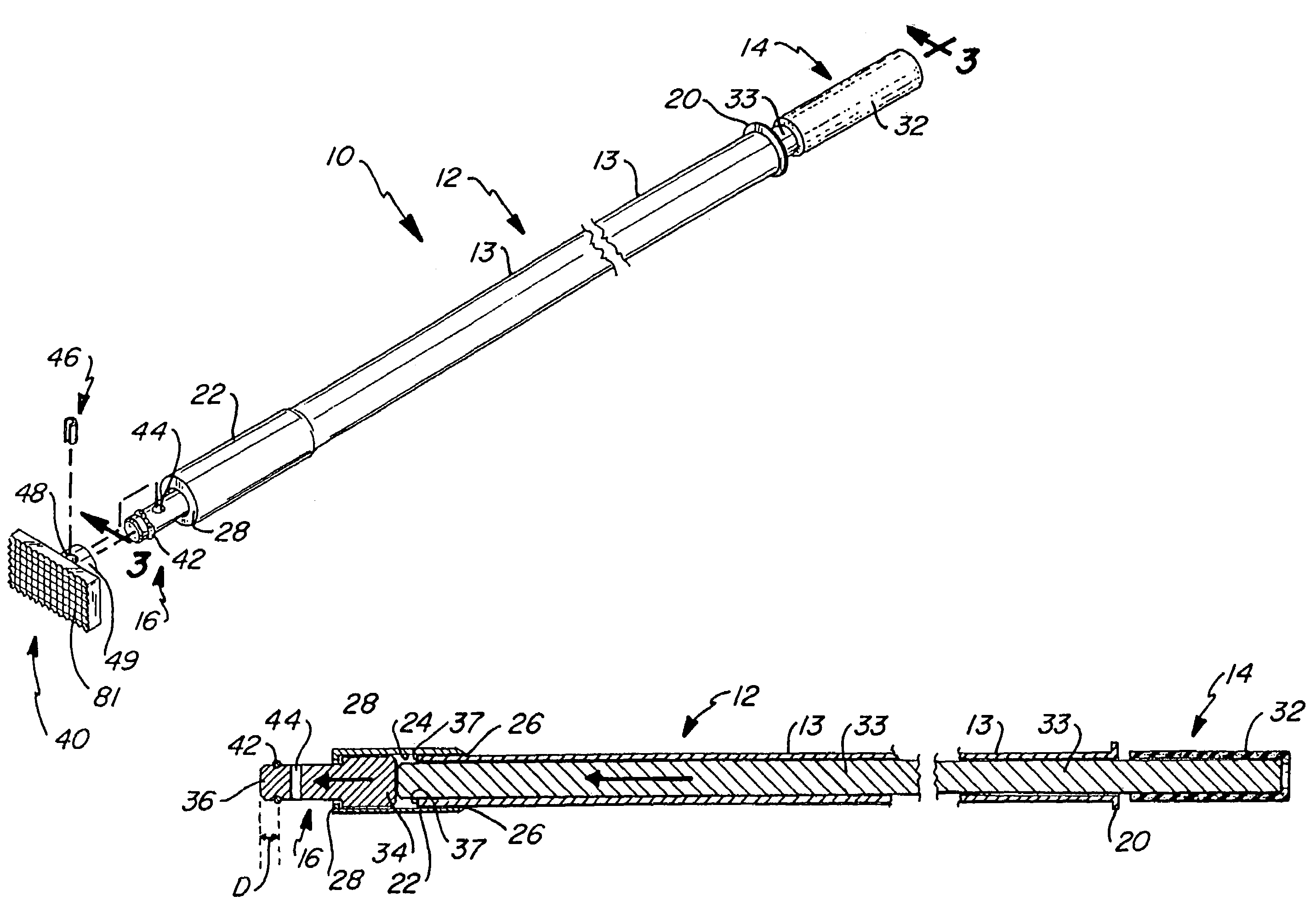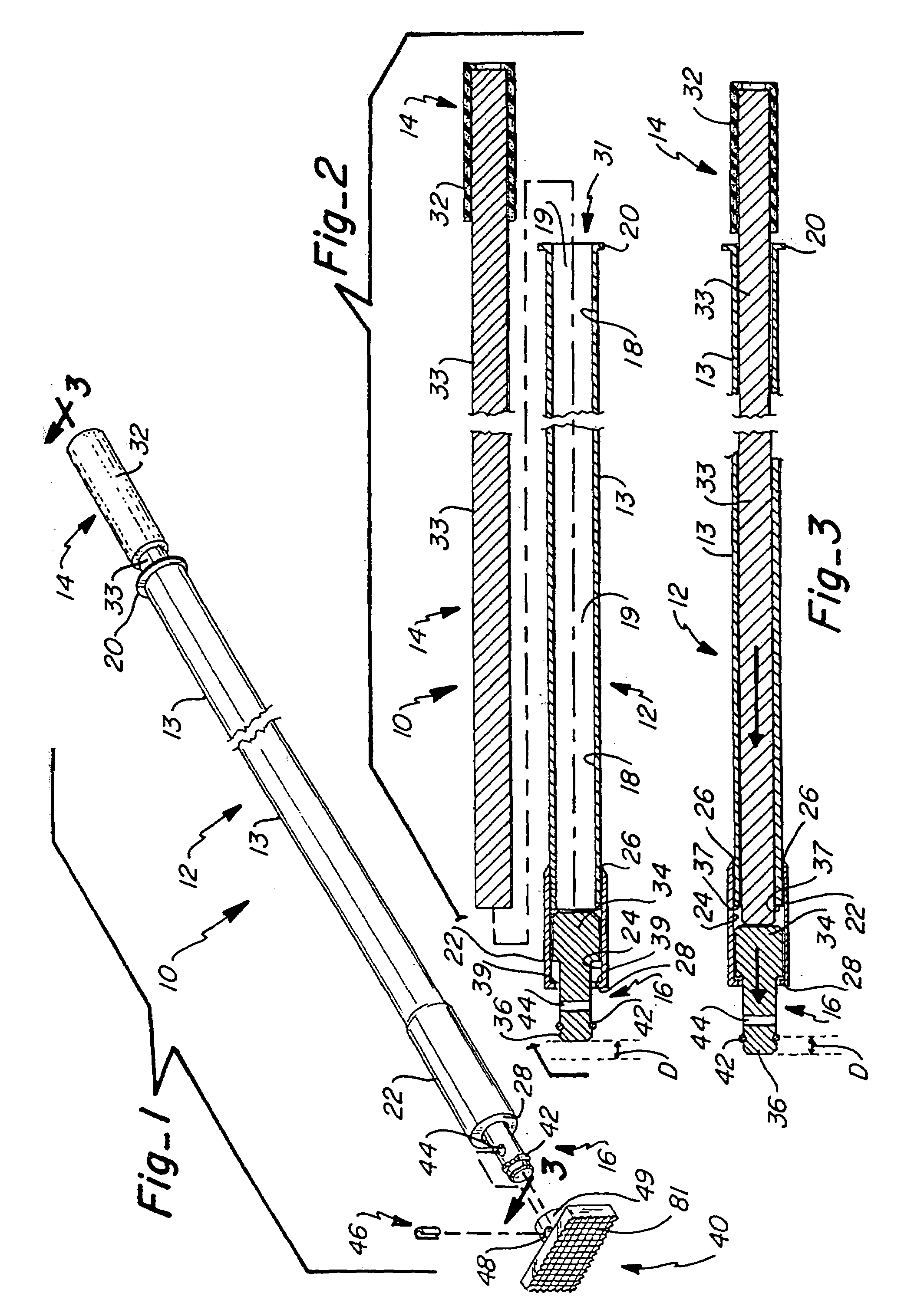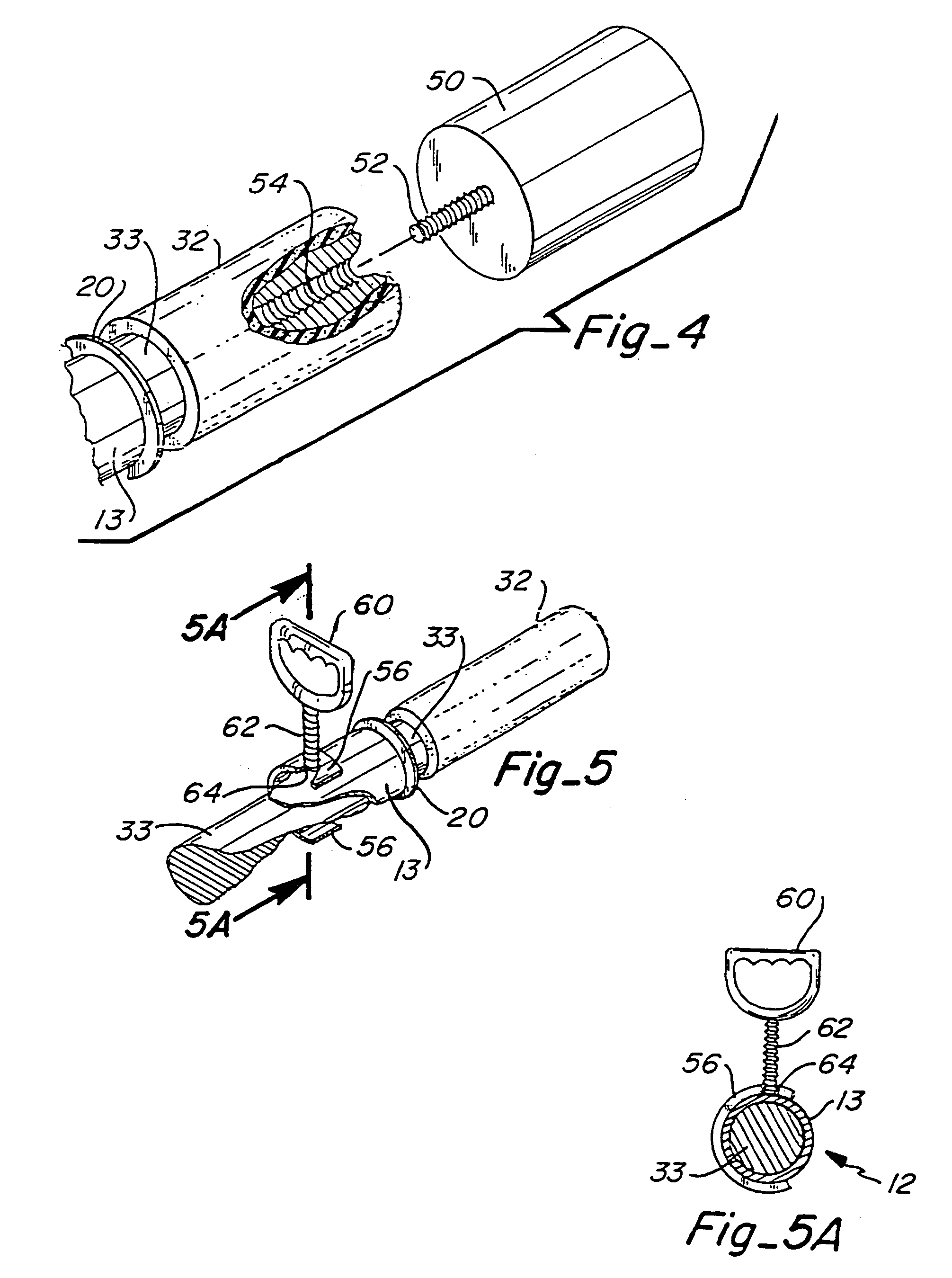Device and method for transferring force to a targeted objected
a technology of target objects and devices, applied in the field of sliding hammers, can solve the problems of less uniform angle at which force is applied to a targeted object, more difficult to maintain alignment of path, and easy to grip during use, so as to reduce the shock of impact, increase or decrease the amount of force, and reduce the effect of impact shock
- Summary
- Abstract
- Description
- Claims
- Application Information
AI Technical Summary
Benefits of technology
Problems solved by technology
Method used
Image
Examples
first embodiment
[0040]As shown in FIGS. 1–3 in a first embodiment, the slide hammer 10 includes three major components, namely, a guide sleeve 12, a plunger 14 that is slidably engaged within said guide sleeve, and an impact head 16 which is slidably secured within the distal end of the guide sleeve 12. The guide sleeve 12 is preferably of a cylindrical shape, and has a main guide sleeve section 13 and a corresponding inner cylindrical surface 18 forming a longitudinal passageway 19. A flange 20 is formed at the proximal end of the guide sleeve. The guide sleeve 12 further includes an impact head receiving section 22. As shown in the vertical sections of FIGS. 2 and 3, receiving section 22 has an inner cylindrical surface 24 which is of a slightly larger diameter than inner surface 18. Receiving section 22 may simply be a larger sized cylinder pipe member which overlaps with main guide sleeve section 13 at welded joint or overlap area 26. The distal end of head receiving section 22 has a washer or ...
second embodiment
[0053]Now referring to FIGS. 9 and 14–16, the second embodiment also includes a removable end cap 310 which is threadably received on the proximal end of the guide sleeve. A handle 312 of a rubber or resilient type of material may be attached to the proximal end of the plunger to facilitate grasping by the user. Additionally, the proximal end of the plunger may include a threaded extension 314 which may be used to attach a desired weight 316 thereto. Referring specifically now to FIG. 15, the end cap 310 is shown. It includes a plurality of internal threads 318, a flange 320, and an inner concentric extension or flange 322. A resilient cover 315 (FIG. 8) may be placed over the exposed threads 314 when a weight 316 is not used. As seen in FIG. 16, when the plunger is nearly completely withdrawn from the guide sleeve, a split ring 324 attached to the plunger prevents the plunger from being removed from the guide sleeve as the split ring contacts the smaller diameter portion formed by ...
PUM
| Property | Measurement | Unit |
|---|---|---|
| Force | aaaaa | aaaaa |
| Speed | aaaaa | aaaaa |
Abstract
Description
Claims
Application Information
 Login to View More
Login to View More - R&D
- Intellectual Property
- Life Sciences
- Materials
- Tech Scout
- Unparalleled Data Quality
- Higher Quality Content
- 60% Fewer Hallucinations
Browse by: Latest US Patents, China's latest patents, Technical Efficacy Thesaurus, Application Domain, Technology Topic, Popular Technical Reports.
© 2025 PatSnap. All rights reserved.Legal|Privacy policy|Modern Slavery Act Transparency Statement|Sitemap|About US| Contact US: help@patsnap.com



